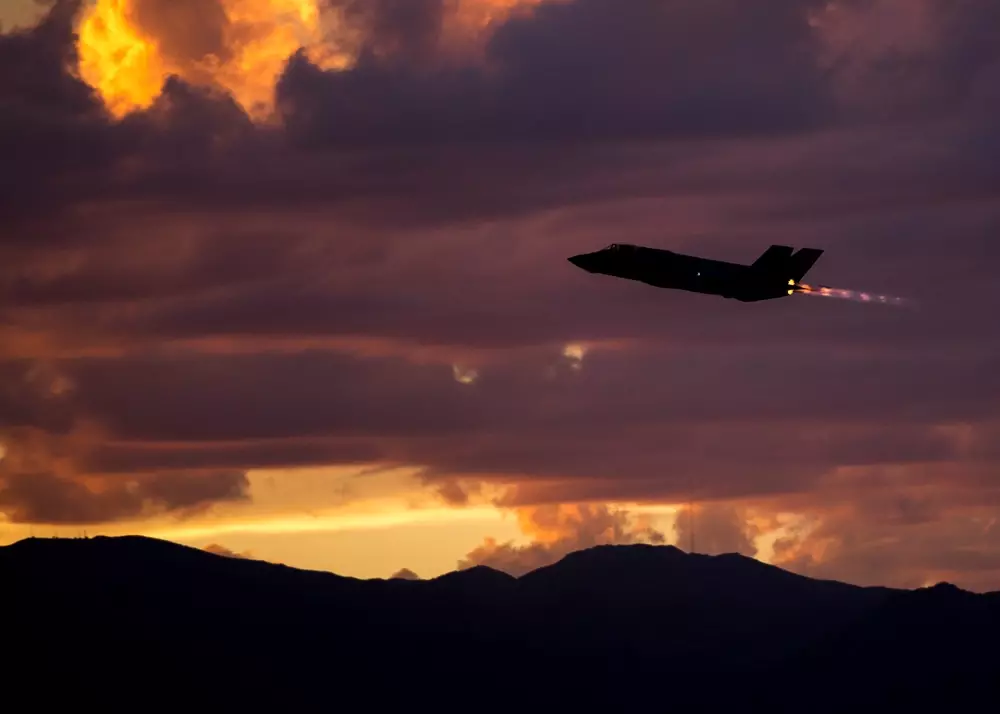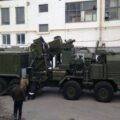U.S. military officials continue searching for an F-35B Lightning II stealth fighter jet that went missing under mysterious circumstances near Charleston, South Carolina, on Sunday afternoon.
Officials at Joint Base Charleston say that at approximately 2 pm local time, a Marine Corps pilot from Marine Fighter Attack Training Squadron (VMFAT) 501 safely ejected from the 5th generation fighter following what has been described as a “mishap.”
The pilot was located in a residential area of North Charleston on South Kenwood Drive, roughly 2.5 miles north of Joint Base Charleston. According to the military, the pilot was transferred to a local medical center in stable condition.
In a bizarre twist, several hours after the incident, Joint Base Charleston appealed on social media for the public’s help finding the lost F-35 jet.
“Emergency response teams are still trying to locate the F-35. The public is asked to cooperate with military and civilian authorities as the effort continues,” a Facebook post issued by Joint Base Charleston reads. “If you have any information that would assist the recovery teams, please call the JB Charleston Base Defense Operations Center at 843-963-3600.”
“The jet’s transponder, which usually helps locate the aircraft, was not working for some reason that we haven’t yet determined,” Jeremy Huggins, a spokesman at Joint Base Charleston, told the Washington Post. “So that’s why we put out the public request for help.”
In a follow-up release, officials said that “based on the jet’s last-known position and in coordination with the FAA,” recovery efforts focused on an area near Lake Moultrie and Lake Marion, about 30 to 40 miles north of Joint Base Charleston.
The $78 million fighter jet is still missing as of Monday morning.
The cause of the “mishap” remains unknown. However, there are some indications that the F-35B continued to fly on autopilot for some time after the pilot had ejected.
Speaking on background as they were not authorized to speak on the record, a military source familiar with the incident told The Debrief the F-35B missed an approach while preparing to land in a thunderstorm when the pilot ejected. According to the individual, the pilotless fighter jet continued flying for an undetermined distance.
Several media outlets additionally reported that the F-35 continued flying in a “zombie state” after the pilot ejected. However, U.S. military officials have not confirmed or commented on these claims.
The F-35B Lightning II is equipped with a Martin-Baker MK16 – US16E ejection seat, which can automatically eject a pilot if on-board sensors believe the aircraft is about to crash.
Last December, a pilot was ejected from an F-35B while attempting a landing on the tarmac of Naval Air Station Joint Reserve Base Fort Worth in Texas. A video captured by a bystander showed the fighter bouncing into the air after coming down for a vertical landing, causing the aircraft to abruptly pitch forward just before the pilot ejected.
The accident is believed to have been caused by a “technical fault,” which resulted in engine vibration when the F-35 attempted a vertical landing. So far, the Air Force has not disclosed whether the pilot manually engaged the ejection seat or if their sudden departure from the cockpit resulted from the fighter’s auto-eject feature.
In this recent incident, several military aviation professionals The Debrief spoke with speculated that adverse weather conditions could have caused the F-35’s nose to pitch down, triggering the jet’s auto-eject feature. However, these individuals cautioned this was purely speculation and that the chances of the auto-eject being inadvertently triggered were relatively low.
Ironically, a 5th generation stealth fighter jet isn’t the most consequential piece of hardware the military has lost in this particular region of the southeastern U.S.
Roughly 85 miles south of where the F-35 went missing, the Air Force lost a 7,600-pound Mark 15 nuclear bomb in the waters off Tybee Island, near Savannah, Georgia, following a mid-air collision between a B-47 bomber and an F-86 fighter plane in 1958. During congressional testimony in 1966, then- Assistant Secretary of Defense W.J. Howard admitted the lost device was a “complete weapon, a bomb with a nuclear capsule.”
Sixty-five years later, the 3.8 megaton nuclear bomb capable of delivering a blast 190 times more powerful than the Fat Man bomb dropped on Nagasaki is still presumed lost somewhere in Wassaw Sound off the shores of Tybee Island.
When asked by The Debrief, a spokesperson for Marine Corps Headquarters declined to comment on the claims that the missing F-35 had continued to fly after the pilot was ejected.
“We can confirm a mishap involving an F-35B Lightning II jet from Marine Fighter Attack Training Squadron (VMFAT) 501 with the 2nd Marine Aircraft Wing. The pilot safely ejected from the aircraft,” the Marine Corps spokesperson said.
“We are currently still gathering more information and assessing the situation. The mishap will be under investigation.”
According to officials, the 2nd Marine Aircraft Wing, headquartered in Marine Corps Air Station Cherry Point, North Carolina, will lead the investigation.
Tim McMillan is a retired law enforcement executive, investigative reporter and co-founder of The Debrief. His writing typically focuses on defense, national security, the Intelligence Community and topics related to psychology. You can follow Tim on Twitter: @LtTimMcMillan. Tim can be reached by email: tim@thedebrief.org or through encrypted email: LtTimMcMillan@protonmail.com

